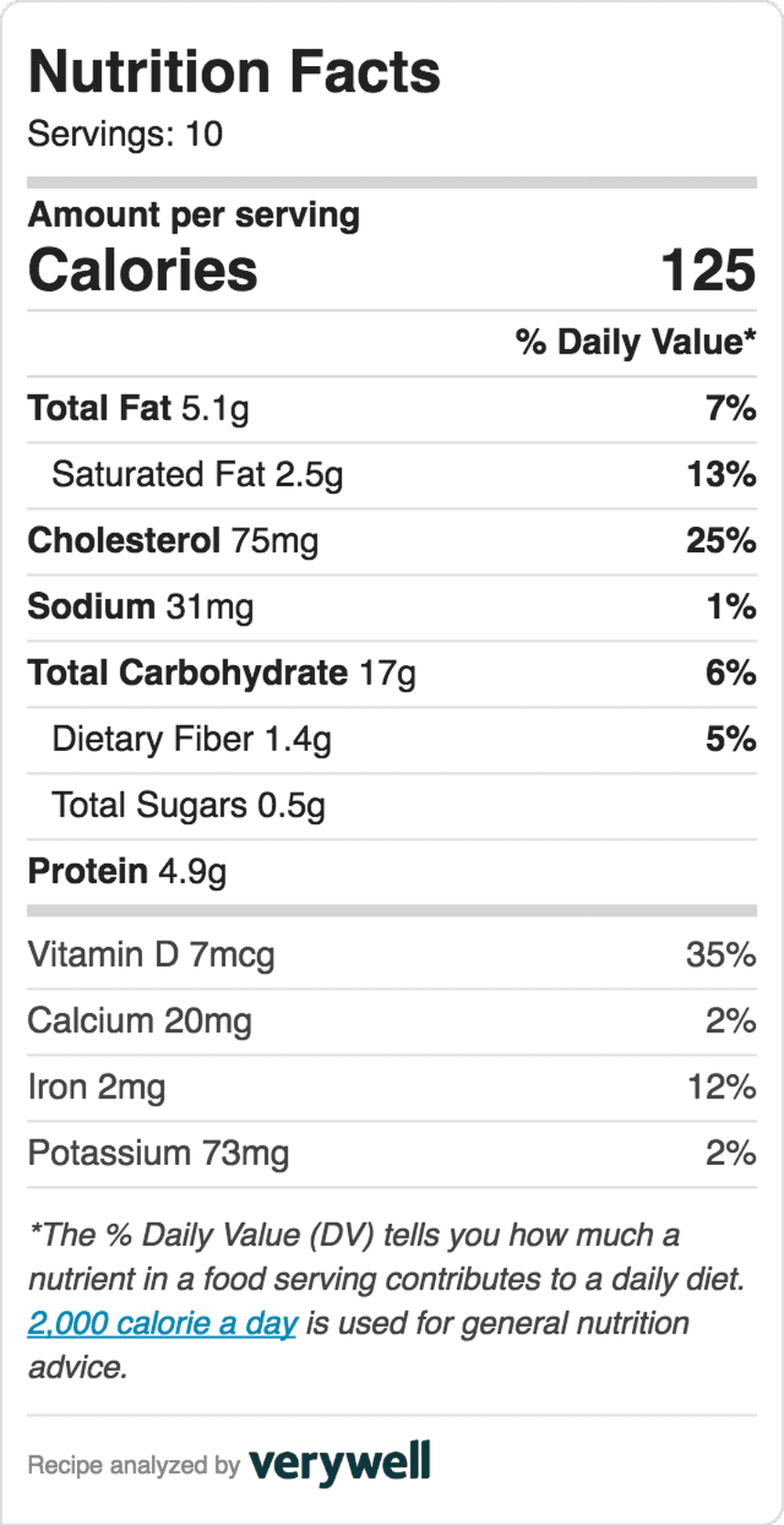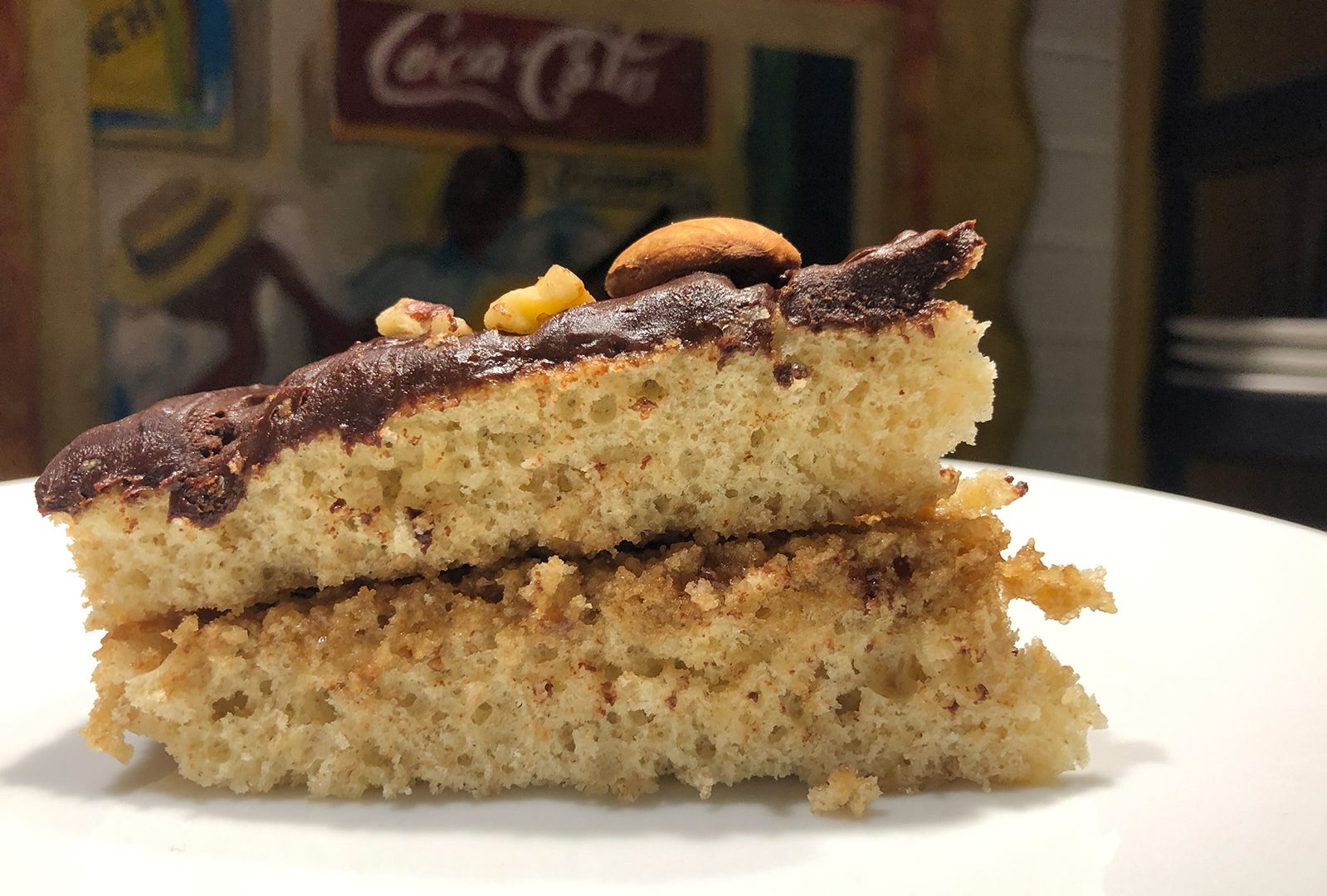
Raising a cake to its full potential at high altitude is a difficult project. I live at 5,280 feet above sea level, but want to be able to make good cakes. I want: to know what is in my desserts, to choose better ingredients than many commercial bakers, and to follow the maxim that if you want to add the possibly ‘junk’ calories of a dessert, you ought to take the effort to make it yourself.
 Just for fun I asked a calorie counting program what a piece of sponge cake with no frosting costs — in calories. At about 200, this cake, with a chocolate ganache, is less than the glass of wine I had with it.
Just for fun I asked a calorie counting program what a piece of sponge cake with no frosting costs — in calories. At about 200, this cake, with a chocolate ganache, is less than the glass of wine I had with it.
I’ve made this cake about once a week since the beginning of 2018. It started out like most of my previous cakes and had a nice sturdy structure but no loft. Then I made it in Dallas with the aid of a Kitchen Aid mixer and I learned what to look for in a lofty batter. Now, finely-adjusted, it works at altitude.
I did need to find a hand mixer – one you operate by hand. My very productive whisk just doesn’t whip the eggs to the ribbon, but I am on the lookout for one that will.
Mile High Genoise Cake with Ganache
- 4 eggs
- 90 grams of turbinado sugar that has been stored with a vanilla bean
- 125 grams of all-purpose flour.
For the ganache
- 4 T. cream
- 2 oz. semi-sweet chocolate
Grease an 8-inch spring form pan and cut out a disk of parchment for the bottom (easy clean up later and removal from the pan). Preheat oven to 350 degrees F, and at altitude I think the use of a convection fan is too drying.
Break the eggs into a heat-proof bowl that you like for mixing. Beat slightly. Add the sugar and place over a pan of simmering water. Beat until the sugar dissolves. (You can feel it with the spoon or your teeth if sugar is still solid).
At this point the bowl can come off the heat, and you must continue to beat the mixture until the batter comes to ‘the ribbon’ and the batter is nearly white.
Use a strainer to sift the flour onto the batter and fold it in careful to deflate the eggs as little as possible. Pour mixture into the prepared pan and bake in the center of the oven for – at most – 20 minutes. At this time test for doneness with a toothpick and if it comes out clean, cake is done. Place on a rack to cool.
Ovens have been the greatest variable for me in this test baking, so make a note of the total baking time you used and adjust if needed, for example: position in oven differently, higher or lower, bake on a cookie sheet if bottom isn’t done but the rest of the cake is, turn up or down the heat and alternatively adjust the time.
All the cakes I’ve made with this process have been tasty, so you won’t need to toss out, your practice cakes, but you may want to go again if your first one isn’t perfect. Sometimes the batter seems too dry, and if so, I add a teaspoon of milk, or recently citrus zest and a little spiced rum. I made a creme Anglais for one cake I found to be too dry, and it was delicious, whipped cream in the center between layers is a great idea too. Some genoise recipes add from 50 to 100 grams of butter. I tend not to go this route because it changes how you mix the ingredients, as well. Most recipes recommend softening the butter and adding the sugar to it, then beating in the eggs. I think this reduces the air that you can get into the eggs. I’ve also separated the eggs and folded in the whites at the end. If you double the recipes, this isn’t a bad approach, but at this volume, I haven’t seen much improvement in the lift.
By the time you have perfected your oven and egg beating, you’ll have the recipe memorized. I’ve got the whole process down to about 30 minutes. Less time than a trip to the store.
While this cake was baking, I put a 2 oz. block of very good Callebaut semi-sweet 70% chocolate in a heavy pan with 4 T of whole milk on my lowest burner. When the timer went off telling me the cake might be done, the chocolate had melted. I mixed it with a whisk and voila – ganache. Cake was set in the cool night air coming through the windows, and within 10 minutes was lifted from the spring form pan. Ganache was kept warm on the stove from residual oven heat and poured right onto the top of the cake.
In January of 2021:
I made a caramel chocolate ganache – pictured in the header. Make the caramel first by boiling 4T of sugar with 1/4 cup of water. When it smells like caramel slowly add 4T of cream. When the caramel sauce is smooth and free of lumps pour it over 2 oz. of chopped good chocolate. Let the heat of the caramel melt the chocolate and then use it for the center and top of the cake.
Notes from February 2023:
Doubled this recipe for the super bowl and added cocoa. (Subtracting most (all but 10g) of the 30 g. of cocoa from the flour. Added about 2T of butter but the cake itself was very dry. I am not certain of the cooking time but it was at least 25 minutes and the two pans were set on a new cookie sheet. The next day I made one cake. Used these proportions. Baked for 20 minutes, not under-sheet, and the cake was moist, and a good texture.
- 4 eggs
- 90 grams of turbinado sugar that has been stored with a vanilla bean
- 115 grams of all-purpose flour
- 15 grams cocoa
- 2 T butter
- 1 T milk
